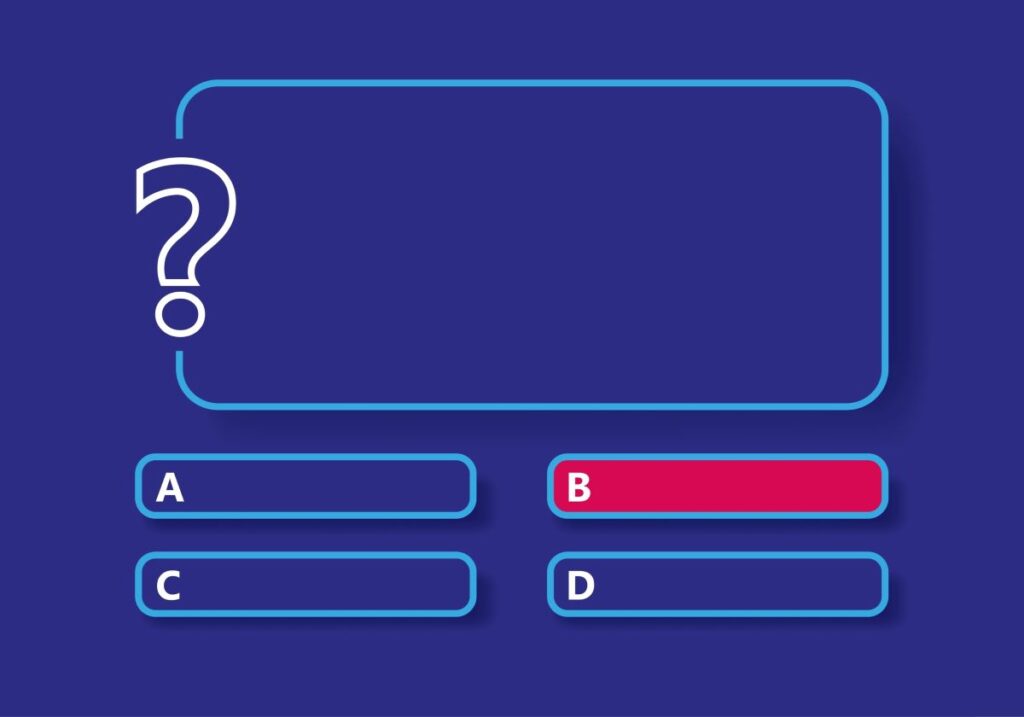The groan is almost palpable. Announce a multiple-choice exam, and you might as well have just assigned a five-page research paper due tomorrow. For many students (and let’s be honest, some teachers too!), multiple-choice questions conjure images of rote memorization, tricky distractors, and a test of luck rather than genuine understanding.
But what if we told you that the humble multiple-choice question, often maligned, holds immense potential as a powerful tool for assessing learning, promoting critical thinking, and even making the assessment process more engaging?
As educators, we’re constantly seeking effective ways to gauge student comprehension and guide our instruction. While essays and projects offer deep insights, the reality of classroom size and time constraints often brings us back to the efficiency of the multiple-choice format.
The good news is, with thoughtful design and a strategic approach, we can transform the multiple-choice exam from a dreaded hurdle into a valuable learning experience.
Beyond Rote: Crafting Effective Multiple-Choice Questions
The key to making multiple choice work for your students lies in moving beyond basic recall. A well-designed multiple-choice question doesn’t just ask “what”; it asks “why” or “how.” It pushes students to analyze, synthesize, and evaluate information, rather than simply regurgitate facts.
Consider the classic example: a history question asking for a specific date. While important for foundational knowledge, it doesn’t necessarily reveal a student’s understanding of historical context or causation.
Now, imagine a multiple-choice question that presents a scenario and asks students to identify the most likely outcome based on their understanding of historical principles. This taps into higher-order thinking skills.
The Anatomy of a High-Quality Multiple-Choice Question
To craft truly effective multiple-choice questions, let’s break down their essential components:
- The Stem: This is the question or incomplete statement that presents the problem.
- Clarity is King: The stem should be clear, concise, and unambiguous. Avoid negative phrasing (e.g., “Which of the following is NOT…”), as it can be confusing. If you must use it, bold or italicize the negative word.
- Focus on a Single Idea: Each stem should address only one concept or problem.
- Avoid Clues: Don’t embed clues to the correct answer within the stem itself.
- The Options (Answer Choices): These are the possible answers, consisting of one correct answer and several distractors.
- Plausible Distractors: This is where the art comes in. Distractors should be plausible but incorrect. They should represent common misconceptions, partial truths, or logical errors that students might make. Avoid obviously wrong or humorous options.
- Parallel Structure: All options should be grammatically parallel and similar in length and complexity. This prevents students from eliminating answers based on superficial differences.
- Vary the Position of the Correct Answer: Don’t consistently place the correct answer in the “B” or “C” position. Randomize its placement.
- Avoid “All of the Above” or “None of the Above” (Mostly): While sometimes appropriate, these options can make it difficult to determine if a student truly understands the material or is simply using elimination strategies. If used, ensure the question is designed to truly test a deeper understanding.
Engaging Students with “Fun” Multiple-Choice Questions (Seriously!)
Yes, you read that right. Multiple-choice questions can actually be fun. While “fun multiple choice questions” might sound like an oxymoron, the key is to inject an element of novelty, relevance, or challenge that sparks student interest.
- Scenario-Based Questions: Present a real-world scenario or a fictional problem and ask students to apply their knowledge to find a solution.
- Image/Graph Interpretation: Instead of just text, use images, charts, or graphs as part of the stem, requiring students to interpret visual information.
- “Find the Error” Questions: Present a statement or concept with a subtle error and ask students to identify it. This promotes careful reading and critical analysis.
- Debate/Argument Questions: Present a mini-argument and ask students to identify the strongest supporting evidence or the most logical counter-argument.
- Interactive Formats: While not strictly “multiple choice exam” format, consider using online quiz platforms that offer immediate feedback and gamified elements. This can make the learning process itself more engaging.
Leveraging the Multiple-Choice Exam for Learning, Not Just Assessment
The multiple-choice exam shouldn’t be the end of the learning journey; it should be a powerful mid-point or checkpoint. Here’s how to maximize its educational impact:
- Pre-Assessment: Use multiple-choice questions at the beginning of a unit to gauge prior knowledge and identify areas that need more focus.
- Formative Assessment: Integrate quick multiple-choice quizzes throughout a lesson or unit to check for understanding and provide immediate feedback. Tools like Kahoot! or Google Forms can make this seamless and engaging.
- Post-Assessment Analysis: After a multiple-choice exam, don’t just return the grades. Review the questions, especially those that many students missed. Discuss why certain distractors were appealing and clarify misconceptions. This transforms the assessment into a valuable learning opportunity.
- Self-Correction: Encourage students to review their own answers, identify their mistakes, and understand the correct reasoning. This fosters metacognition and self-directed learning.
Conclusion: Embracing the Potential of the Multiple-Choice Question
The multiple-choice question, when thoughtfully constructed and strategically implemented, is far more than a simple test of recall. It’s a versatile tool that can assess a wide range of cognitive skills, from foundational knowledge to critical thinking and problem-solving.
By focusing on creating high-quality stems and plausible distractors, and by integrating “fun multiple choice questions” and a learning-centric approach to the multiple-choice exam, we can empower our students to not only demonstrate what they know but also deepen their understanding.
Let’s reclaim the multiple-choice question as a valuable ally in our mission to foster truly engaged and knowledgeable learners.
Educators never stop learning; check out our available graduate degree programs to hone your skills and promote lifelong learning and academic excellence.




